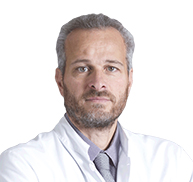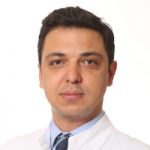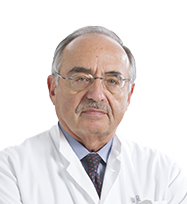- HYGEIA
- Vision & Mission
- Timeline
- Organizational structure
- Press Releases
- Social responsibility
- Awards and Distinctions
- Human Resources
- Scientific & Training activities
- Articles – Publications
- Our Facilities
- Magazines
- Healthcare Programs
- Doctors
- Services
- Medical Divisions & Services
- Imaging Divisions
- Departments
- Units
- Centers of Excellence
- Emergency – Outpatient
- Nursing Service
- Ambulances
- Patients
6th Orthopaedics Department
The HYGEIA Hospital 6th Orthopedic Clinic offers specialized orthopedic surgery, focusing on minimally invasive techniques, such as the AMIS (anterior minimal invasive surgery) technique for the hip and the MIK for the knee (minimally invasive knee arthroplasty), arthroscopic techniques for the shoulder and ankle, as well as fast-track surgery protocols.Hip arthritis is a disease that may have a dramatic impact on the quality of life of patients, due to severe pain in the area of the hip, initially after tiring activities and later on throughout the day and even at night. Hip arthritis also greatly limits mobility.
The most common types of arthritis are:
- osteoatrthritis, which is the most frequently occurring type
- rheumatoid arthritis
To date, there is no pharmaceutical treatment available to treat the disease or affect its progression, apart from reducing the pain, which, however, carries all the negative effects of medications.
If conservative treatment can no longer offer anything, advanced cases of arthritis may be effectively treated with total arthroplasty. This entails replacement of the worn out joint surface with artificial materials known as prostheses. It is currently considered one of the most clinically effective procedures, offering better quality of life, normal mobility range and no pain.
Arthroplasty
Over 1 million total arthroplasties are performed around the world annually and this number is expected to triple by 2030. The first arthroplasty ever was performed in Europe in 1960 and is considered one of the most significant advances in the field of surgery.
Great progress has been achieved in the last few years due to the creation of more durable materials, with the hope that they will last longer. Major efforts have also been made in the field of surgical techniques, refuting the belief that the larger the surgery, the bigger the incision.
As is the case in all surgical fields, orthopedics has also followed the trend of achieving the desired result with minimal damage to healthy human tissue. Based on this approach, as well as the experience of conventional surgical techniques, orthopedic surgeon Athanasios Tsoutsanis received specialized training in anterior minimal invasive surgery (AMIS) in Paris.
Knee arthritis is one of the most common musculoskeletal problems requiring treatment, especially in older people. In developed countries, bone and joint conditions make up half of the chronic diseases in people over 50. The most common type of knee arthritis is degenerative osteoarthritis, followed by inflammatory arthritis, with rheumatoid arthritis being the most commonly encountered inflammatory condition.
The clinical symptoms of the disease include:
- pain when walking, but also at night
- limited movement of the knee
- inability to walk up the stairs or get up from a sitting position, and knee twisting
Conservative treatment includes:
- weight loss
- administration of chondroprotective agents either orally or injected in the knee
- anti-inflammatory medications for the pain
- physiotherapy
At the final stages of knee osteoarthritis, when conservative treatment cannot offer anything more, the condition is treated with total arthroplasty, which is considered one of the most effective procedures.
Total knee arthroplasty, as is also the case with hip arthroplasty, is one of the most successful surgical procedures. Over 400,000 such procedures are performed in the USA annually, while this is expected to reach 3.5 million by 2030. Although until recently, more arthroplasties were performed on the hip rather than the knee, this is starting to change.

 Left: Conventional Technique, Right: ΜΙΚ Technique
Left: Conventional Technique, Right: ΜΙΚ Technique
 Left: Conventional Technique, Right: ΜΙΚ Technique
Left: Conventional Technique, Right: ΜΙΚ TechniqueAMIS Technique
The AMIS technique started being performed by Athanasios Tsoutsanis, orthopedic surgeon and University of Athens PhD holder, in 2005. AMIS is performed through a small skin incision and is almost non-invasive, since no muscles need to be resected or separated. As opposed to all the other surgical techniques, when muscle resection and separation is necessary, with the AMIS technique, access to the site is achieved using special tools that simply shift the muscles, even preserving the synovial pouch.
Benefits of the method:
- minimal postoperative pain
- reduced blood loss during surgery, while if an autotransfusion system is used, blood transfusions are not even necessary in many cases
- shorter hospitalization
- significantly lower risk of dislocation from wrong movements or sitting, so there is no reason to limit mobility
- intact functional muscles, which assists the patient to walk normally and return to daily activities very soon.
As is the case in all surgical fields, the trend of achieving the desired result with minimal damage to healthy human tissue has been made possible with the AMIS technique.
 Contact Us
Contact Us4th Floor
Office 1
(9, Εr. Stavrou – Opposite Hygeia Hospital)Telephone
+30 210 686 7309Medical Team
- Director
-
 Tsoutsanis Athanasios
Tsoutsanis Athanasios - Assistant Director
-
 Karaliotas Georgios
Karaliotas Georgios - Attending Physician
-
 Petridis Georgios
Petridis Georgios
- © 2007-2024 HYGEIA S.M.S.A.
- Personal Data Protection Policy
- COOKIES Policy
- Terms of Use
- Privacy Policy
- Credits
- Sitemap
- Made by minoanDesign
Ο ιστότοπoς μας χρησιμοποιεί cookies για να καταστήσει την περιήγηση όσο το δυνατόν πιο λειτουργική και για να συγκεντρώνει στατιστικά στοιχεία σχετικά με τη χρήση της. Αν θέλετε να λάβετε περισσότερες πληροφορίες πατήστε Περισσότερα ή για να αρνηθείτε να παράσχετε τη συγκατάθεσή σας για τα cookies, πατήστε Άρνηση. Συνεχίζοντας την περιήγηση σε αυτόν τον ιστότοπο, αποδέχεστε τα cookies μας.
Αποδοχή όλων Άρνηση όλων ΡυθμίσειςCookies ManagerΡυθμίσεις Cookies
Ο ιστότοπoς μας χρησιμοποιεί cookies για να καταστήσει την περιήγηση όσο το δυνατόν πιο λειτουργική και για να συγκεντρώνει στατιστικά στοιχεία σχετικά με τη χρήση της. Αν θέλετε να λάβετε περισσότερες πληροφορίες πατήστε Περισσότερα ή για να αρνηθείτε να παράσχετε τη συγκατάθεσή σας για τα cookies, πατήστε Άρνηση. Συνεχίζοντας την περιήγηση σε αυτόν τον ιστότοπο, αποδέχεστε τα cookies μας.






































